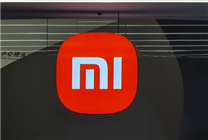Summary:
- Next-Gen Power: Apple’s A20 series chips will utilize TSMC’s innovative 2nm process technology, marking a significant leap in mobile chip design.
- Memory Integration: The A20 chips will feature integrated memory directly on the same wafer as the CPU, enhancing efficiency and reducing latency.
- Product Strategy: Apple’s A20 standard and Pro versions are set to power the iPhone 18 and its variants, promising superior performance and energy efficiency.
Apple’s A20 Series: A Leap into the 2nm Era
Recent reports indicate that Apple is ramping up preparations for its next-generation A20 series of chips, with the standard version known as Borneo and the Pro version dubbed Borneo Ultra. Both chips will be manufactured using TSMC’s groundbreaking 2nm process technology, representing Apple’s inaugural foray into mobile chips utilizing this state-of-the-art fabrication method.
One of the most significant innovations with the A20 series is the structural redesign that integrates memory directly onto the same wafer as the CPU, GPU, and neural network engine. This methodology supersedes the previous reliance on silicon interposers for connecting components. The implications of this integration are profound—data transmission latency is expected to decrease dramatically, leading to notable enhancements in energy efficiency and AI computing capabilities. Furthermore, the overall size of the chip is likely to be minimized, which will facilitate increased space for batteries and cooling systems within devices.
Strategic Product Planning
In alignment with its established strategy, Apple will present both standard and Pro configurations of the A20 series. The iPhone 18 Pro, iPhone 18 Pro Max, and an anticipated folding-screen iPhone are set to feature the more robust A20 Pro, while the standard iPhone 18 and iPhone 18 Air will be powered by the A20 chip. This differentiation aligns with Apple’s ongoing emphasis on delivering superior performance across its product line.
The advancements seen in the A20 series reflect not only cross-generation upgrades in manufacturing but also significant innovations in packaging and memory architecture. By adopting the 2nm process and integrated RAM design, the A20 chip aims to outperform its predecessors, the A18 and A19, particularly in performance, power efficiency, and AI processing. This evolution provides a stronger hardware foundation for the forthcoming iPhone 18 series, further solidifying Apple’s position in the competitive mobile market.
A New Era of System-Level Integration
The ramifications of the A20 series extend beyond mere performance enhancements. The combination of TSMC’s 2nm technology with integrated memory design signals a pivotal transition into an era of "system-level integration" for mobile chips.
This leap not only bolsters the A20’s potential in terms of AI capabilities and energy efficiency but also sets a higher ceiling for Apple’s plans regarding future advancements in artificial intelligence. Essentially, the A20 series represents not just an incremental upgrade, but a fundamental "chip reconstruction" based on a thorough redesign of the underlying architecture.
In conclusion, as Apple introduces its A20 series chips, consumers and tech enthusiasts alike eagerly await the potential transformations in performance and efficiency across its latest devices. The integration of cutting-edge processes and architecture could redefine expectations for mobile technology, placing Apple at the forefront of innovation in the industry.








